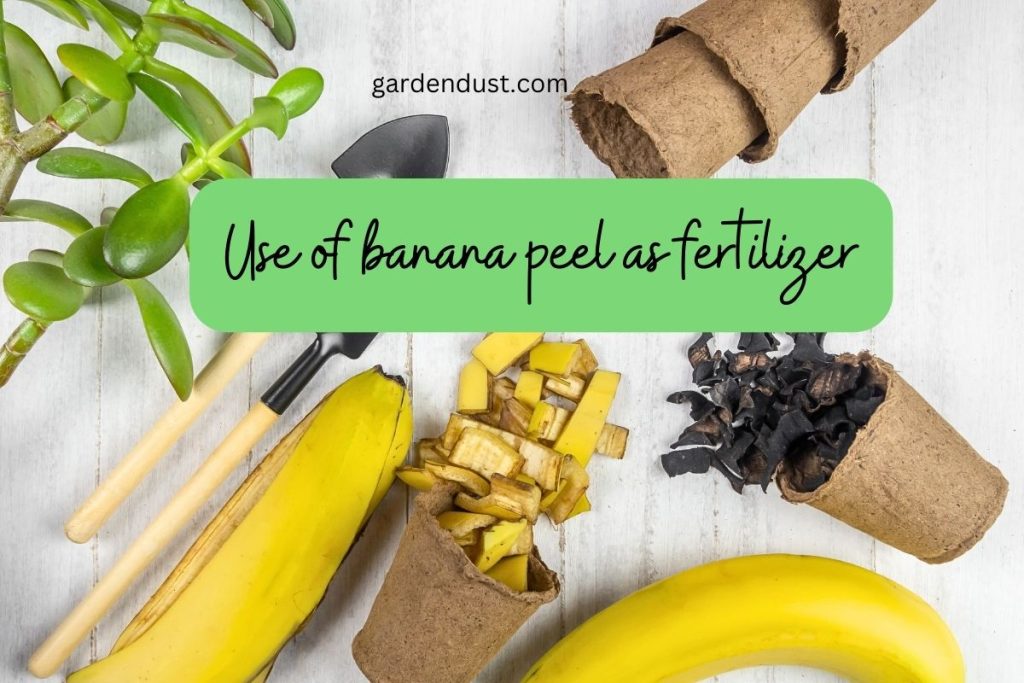Banana peels, often overlooked and discarded as waste, hold a treasure trove of nutrients that can benefit your plants and garden. Rich in potassium, phosphorus, and other essential minerals, banana peels can be a cost-effective and environmentally friendly alternative to conventional fertilizers. In this comprehensive guide, we will explore the various ways banana peels can be used as fertilizer, the nutritional benefits they offer, and tips for incorporating them into your gardening routine.
The Nutritional Composition of Banana Peels:
Before delving into the ways banana peels can be used as fertilizer, it’s crucial to understand their nutritional composition. Banana peels are a rich source of potassium, a vital nutrient for plant growth and development. Potassium plays a key role in strengthening plant cell walls, promoting disease resistance, and enhancing overall plant vigor.
Additionally, banana peels contain phosphorus, another essential nutrient that supports root development, flowering, and fruiting. Other nutrients present in banana peels include calcium, magnesium, sulfur, and trace elements like zinc and copper, all of which contribute to a well-balanced and nutritious fertilizer.
Ways to Use Banana Peels as Fertilizer:
1. Composting:
One of the most effective ways to utilize banana peels as fertilizer is through composting. Banana peels decompose relatively quickly and can be added to your compost bin or pile. The composting process breaks down the peels, releasing their nutrients into the compost, which can then be used to enrich the soil.
To optimize composting with banana peels, chop them into smaller pieces before adding them to the compost. This increases the surface area and accelerates the decomposition process. Mix the banana peels with other organic materials, such as kitchen scraps, leaves, and grass clippings, to create a well-balanced compost.
2. Banana Peel Tea:
Another method is to make banana peel tea, a nutrient-rich liquid fertilizer that can be easily absorbed by plants. To prepare banana peel tea, soak chopped banana peels in water for several days. The water will absorb the nutrients from the peels, creating a potent fertilizer.
Use the banana peel tea to water your plants, ensuring that they receive a steady supply of essential nutrients. This method is particularly effective for potted plants or as a supplement to traditional watering.
3. Direct Application:
For a more straightforward approach, you can directly bury banana peels in the soil around your plants. Simply dig a small hole near the base of the plant and place the banana peels in the hole. Cover them with soil, and over time, the peels will decompose, enriching the soil with valuable nutrients.
This method is convenient for outdoor gardens and works well for plants that benefit from a slow-release nutrient source. As the banana peels break down, they provide a consistent supply of potassium and phosphorus to the surrounding soil.
4. Dried and Ground Banana Peels:
To create a versatile fertilizer that can be stored for longer periods, consider drying and grinding banana peels. Allow the peels to air-dry or use a dehydrator to speed up the process. Once dry, grind the peels into a fine powder.
This powdered form of banana peels can be sprinkled directly onto the soil or incorporated into potting mixes. It serves as a concentrated source of nutrients and is especially beneficial for plants with specific nutritional needs.
READ ALSO:-Use of banana peel as fertilizer
Benefits of Using Banana Peels as Fertilizer:
1.Cost-Effective and Sustainable:
Banana peels are readily available and are often considered waste, making them an inexpensive and sustainable option for fertilizing plants. By repurposing kitchen waste, you not only reduce the need for chemical fertilizers but also contribute to waste reduction and recycling efforts.
2.Environmentally Friendly:
Unlike synthetic fertilizers, which can harm the environment through runoff and soil degradation, banana peels offer a natural and eco-friendly alternative. The slow-release nature of the nutrients in banana peels minimizes the risk of over-fertilization, promoting a healthier and more balanced ecosystem.
3.Improved Soil Structure:
The organic matter in banana peels enhances soil structure by promoting water retention and aeration. As the peels decompose, they create a crumbly and nutrient-rich soil that encourages beneficial microbial activity.
4.Disease Resistance:
The potassium content in banana peels plays a crucial role in boosting a plant’s immune system. Plants supplied with sufficient potassium are better equipped to resist diseases and environmental stressors, resulting in healthier and more robust growth.
Tips for Using Banana Peels as Fertilizer:
1. Moderation is Key:
While banana peels offer numerous benefits, it’s essential to use them in moderation. Excessive application may lead to nutrient imbalances or attract pests. As with any fertilizer, it’s crucial to monitor your plants’ response and adjust the application accordingly.
2. Combine with Other Organic Matter:
To create a well-balanced and nutrient-rich soil, combine banana peels with other organic materials. This can include compost, manure, or additional kitchen scraps. The diverse array of organic matter contributes to a more comprehensive spectrum of nutrients for your plants.
3. Chop or Shred Banana Peels:
To expedite the decomposition process, chop or shred banana peels into smaller pieces. This increases the surface area exposed to microbes, facilitating quicker nutrient release. Consider using a blender or food processor for efficient chopping.
4. Rotate Fertilization Methods:
Varying the methods of applying banana peels ensures a more comprehensive nutrient supply for your plants. Rotate between composting, banana peel tea, direct application, and powdered forms to meet the specific needs of different plants in your garden.
Banana peels, often discarded without a second thought, possess immense potential as a natural and nutrient-rich fertilizer. From composting to banana peel tea and direct application, there are numerous ways to harness the benefits of banana peels for your garden. By integrating banana peels into your gardening routine, you not only contribute to a more sustainable and eco-friendly approach but also promote healthier, more vibrant plant growth. Take advantage of this often-overlooked resource and witness the transformative effects of banana peels on your garden’s vitality. Happy Gardening…







